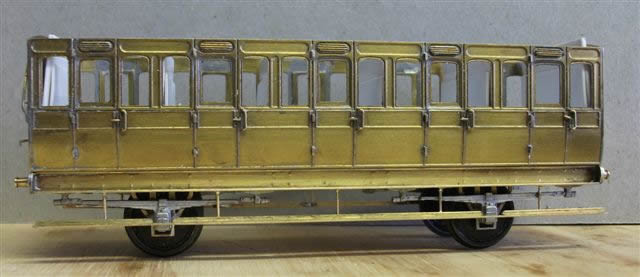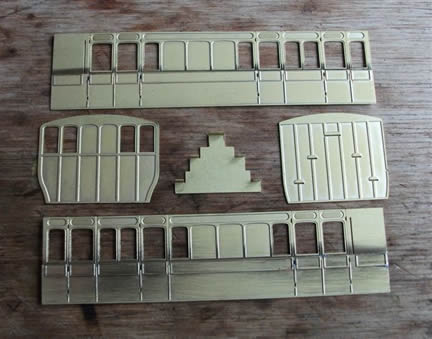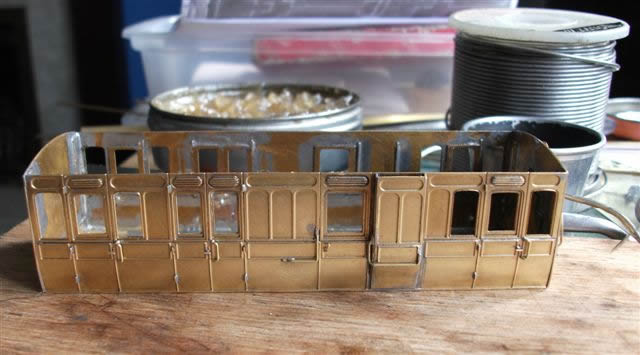

| 266 | ||

|
Strangely enough, the market for LT&SR carriage castings for the 1880s seems not to have taken off yet! So a bit of lateral thinking was applied. On the GA drawings that had come to me with the etchings, the lamps and axle boxes were marked 'same as GER'. The same builder had provided carriages to both companies. Danny Pinnock (of D&S kits fame) used to produce the GER carriages as part of his range. A phone call later and castings for the axle boxes, J hangers and lamps were on their way as he still had some in stock. The sprung buffers and wheels came from Alan Gibson, and Roxey Mouldings were able to supply etched door 'T' handles and also the hooks and shackles for the safety chains fitted to the solebars either side of the coupling. The chains were obtained from 'Rural Railways' at a show. They carry an impressive range of useful bits. There were still some parts that had to be made from scratch. Although etched roofs were provided, I chose not to use them. They are half etched, with rainstrip and cant rail detail incorporated. Unfortunately, they were slightly too wide and the idea of cutting an equal amount from each side, then replacing the cant rail made me decide to make a new roof for each carriage from Plastikard. This is my preferred method anyway, as it allows me to paint and glaze the carriage and then glue the roof on. The homemade roof gave me an opportunity to include a flat false roof to give a good surface area for glueing to the body. I also made the small ring holders for the oil lamps from brass tube. I am not really an engineer or a machinist, despite the efforts of some very good friends to turn me into one, but I did make these little rings on my small lathe, which helped me ensure that they are all alike. Slivers of brass tube cut off by saw would have done just as good a job but with a little more work. I had a few problems with the underframes. I had a little information
to go on for the brakes but as much of that detail is obscured by the
lower footboards, I used some cast clasp type brakes and added some
rudimentary V-hangers and pull rods on the brake carriages. On the other
carriages, all you can see are the hangers and blocks. The real carriages
had Westinghouse brakes and the cylinders are hidden away behind the
solebars. So on the finished carriages, I cannot claim that the underframe
details are anything more than a 'best guess' representation. The lower footboards were made up from 1mm x 3mm brass angle, soldered to wire supports. |
|
| This is the 5 compartment second with the main body and underframe components assembled and the bodyside detail added. The interior has been made up from Plastikard and is having a trial fit | ||
 |
These are the sides and end etchings for the Brake Third No 19 | |

|
||
| The main body assembly of the other brake third. This one has a centre guard's compartment and a luggage compartment which has a double door. This was not glazed on the real thing but had louvres instead. These were made from scribed Plastikard and can be seen in the photo of the completed vehicle. The commode grab handles and those on the ducket and beside the guard's door were bent up from 0.45mm brass wire. The T-handles are etched components obtained from Roxey Mouldings. | ||
| Next page | ||
|
|
||